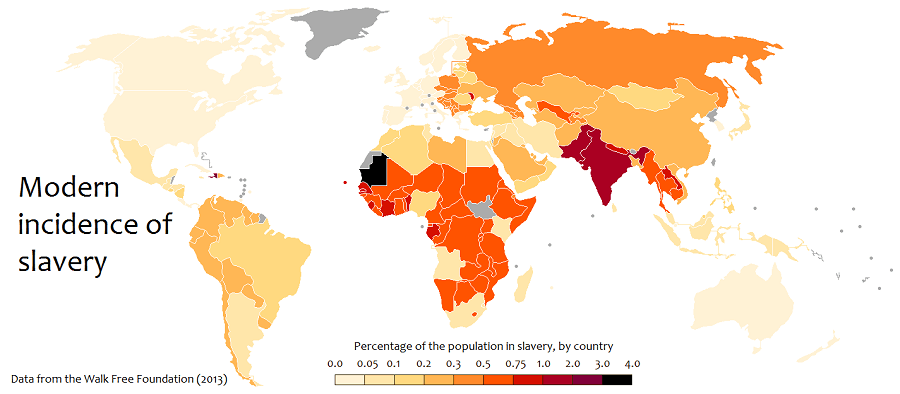
On December 18, 1865, slavery officially ended in the United States. Secretary of State William Seward verified the ratification of the 13th Amendment to the Constitution, stating “Neither slavery nor involuntary servitude, except as a punishment for crime whereof the party shall have been duly convicted, shall exist within the United States, or any place subject to their jurisdiction.”
On December 2, 1949, the United Nations adopted a resolution seeking to eradicate contemporary forms of slavery, including human trafficking, sexual exploitation, child labor, forced marriage, and so on. That day then became known as the International Day for the Abolition of Slavery.
These two historic events both give us the impression that slavery is a thing of the past, only to be found in history books. Sadly, it’s not.
The Realities Of Modern Slavery
Modern slavery–in all the various forms enumerated by the U.N.–is one of the world’s most lucrative crimes, and the U.N. International Labor Organization estimates that forced labor generates $150 billion in illegal profits per year. Because modern slavery doesn’t always look like it did in the history books, the first step to fixing it is simply understanding it–but even that has proven difficult.
“Now that slavery has been outlawed, it is hidden,” said Terry FitzPatrick, communications director of Free the Slaves, a U.S.-based NGO that has been fighting modern slavery since 2000. “Researchers must base their global slavery estimates on sampling methodology, using the tools of social science to measure slavery in a sample population and then extrapolate.”
Different numbers come up depending on which organization published them, but “we don’t need to know the exact number of people enslaved worldwide in order to mobilize a global response,” FitzPatrick said. It’s not just sex slaves either. From African mines to Thai fishing fleets to Indian textile mills, slavery can be found nearly everywhere and in many of our most used products. It’s not as if world leaders aren’t aware of the problem – the UN in September passed Sustainable Development Goal 8.7 with the hope of ending modern slavery by 2030.
How To Eliminate Modern Slavery
Slavery is a hydra that will require the coordination of many different entities to solve. Free the Slaves and other organizations like it are taking important steps toward building awareness and combating slavery on a local level. Governments are starting to take notice. Even large corporations are starting to be held accountable.
California enacted a law called the California Transparency in Supply Chains Act in 2012. Under this law, companies that earn more than $100 million a year must report to the Securities and Exchange Commission with what they are doing to keep products made with slave labor from their products or services. The many facets involved in getting a finished product to a consumer–from extracting materials to making the product to delivering the product–make tracing slavery in a finished consumer good extremely difficult. KnowTheChain.org is taking actions to change that.
“Think about it: right now a CEO can be prosecuted if he bribes a foreign government official, but he faces no legal sanction if he enslaves foreign citizens to make his products,” FitzPatrick said. “That needs to change.”
“Even though more people are enslaved now than ever before in human history, it’s the smallest percentage of the world’s population that has ever been enslaved,” FitzPatrick continued. “And even though slavery profits are huge, up there with gun running and drug trafficking, it’s a tiny percentage of the multi-trillion dollar global economy. So, there is reason for hope.”





